Fashion is a reflection of culture, innovation, and nature, and in recent years, the industry has turned to sustainability as a guiding principle. Among the many concepts shaping sustainable fashion, peak ripeness stands out as a powerful metaphor and practice. Rooted in the idea of harvesting materials at their optimal maturity, peak ripeness has become a cornerstone for designers seeking to marry aesthetics with environmental responsibility. From natural dyes to sustainable fabrics, this approach is transforming how we create and consume fashion.
The Concept of Peak Ripeness in Fashion
Peak ripeness refers to the moment when natural materials achieve their highest quality—whether in terms of color, texture, or durability. This principle, borrowed from agriculture and culinary arts, has found its way into fashion through practices that emphasize timing and precision. By using materials at their zenith, designers can maximize their potential while minimizing waste and environmental impact.
Why Timing Matters
- Quality Enhancement: Materials harvested at peak ripeness often exhibit superior properties. For instance, natural dyes derived from ripe fruits and plants yield richer hues that are less reliant on synthetic additives.
- Sustainability: Utilizing peak-ripe resources reduces the need for chemical interventions and energy-intensive processes.
- Artisanal Value: The uniqueness of peak-ripe materials adds depth and authenticity to fashion collections.
Peak Ripeness and Natural Dyes
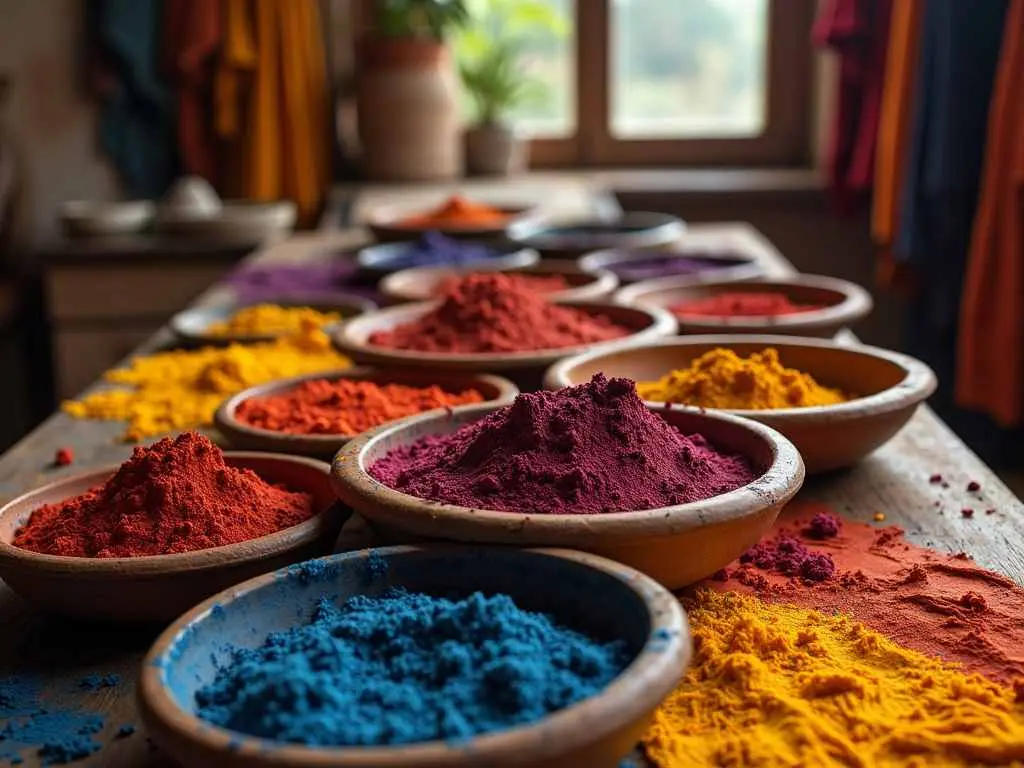
Natural dyes have seen a resurgence as consumers demand eco-friendly alternatives to synthetic colors. Derived from fruits, vegetables, flowers, and other organic sources, these dyes embody the essence of peak ripeness.
The Science Behind Natural Dyes
Natural dyes are extracted from materials like pomegranate rinds, indigo leaves, or turmeric roots at their most mature stage. This ensures maximum pigment concentration and vibrancy. For example:
- Indigo dye undergoes a fascinating transformation during its extraction process. When exposed to air after being reduced in a vat, it changes from green to blue—a testament to nature’s chemistry .
Advantages of Peak-Ripe Natural Dyes
- Sustainability: Natural dyes reduce reliance on harmful chemicals used in synthetic dyeing processes.
- Health Benefits: Fabrics dyed with natural substances often retain bioactive compounds that offer UV protection or antimicrobial properties.
- Aesthetic Appeal: The irregularity of natural dyeing creates unique patterns that cannot be replicated by artificial methods.
Embedded Chart: Influence of Peak Ripeness on Fashion Trends
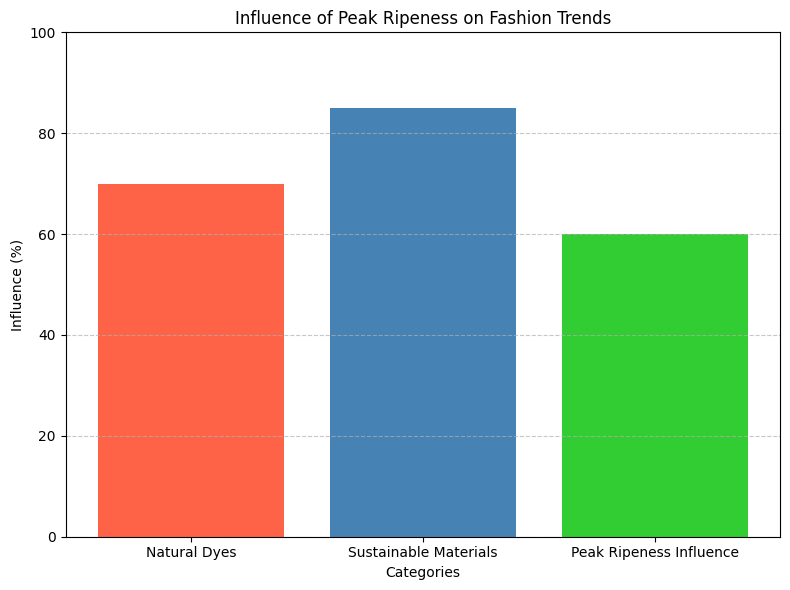
Sustainable Materials and Peak Ripeness
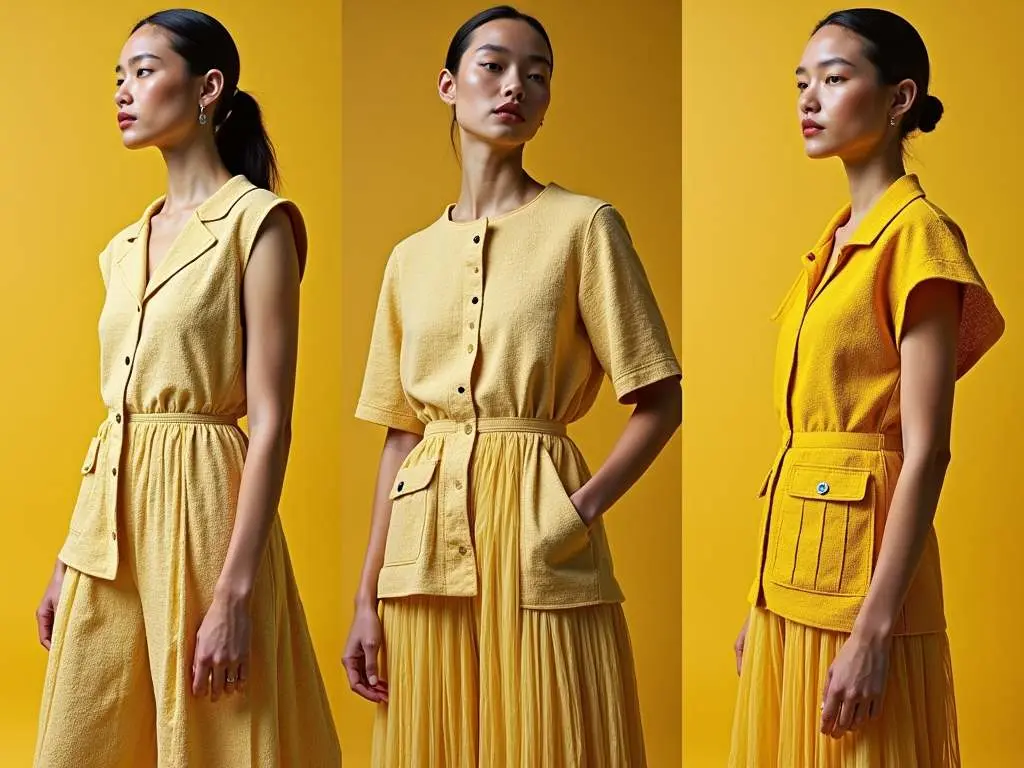
Sustainable fabrics are another area where peak ripeness plays a pivotal role. Designers are increasingly sourcing materials like organic cotton, hemp, banana fibers, and Piñatex (pineapple leather) at their optimal maturity to enhance both quality and sustainability.
Key Materials
- Organic Cotton: Harvested at its prime to ensure softness and durability.
- Hemp: Known for its rapid growth cycle and minimal resource requirements.
- Banana Fibers: A byproduct of banana plantations, these fibers are strong yet biodegradable.
Circular Economy Integration
Peak ripeness also aligns with the principles of circular fashion by promoting the use of renewable resources that can be recycled or upcycled into new garments.
Embedded Chart: Distribution of Sustainable Practices in Fashion
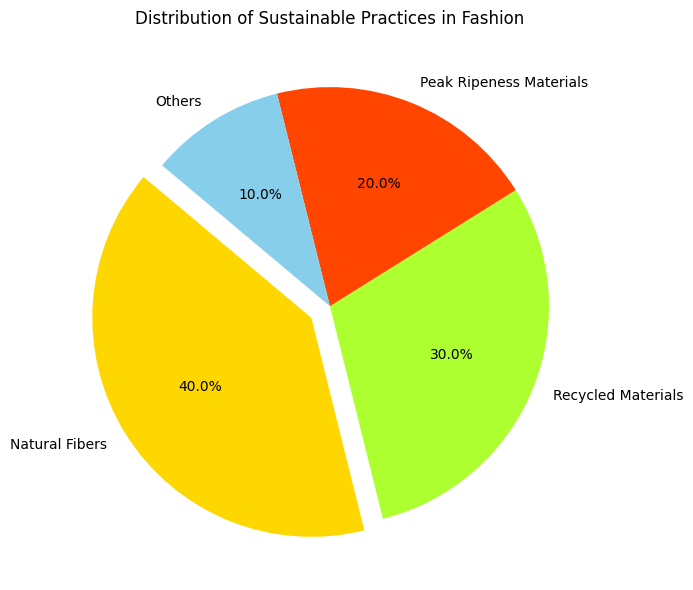
The Growth of Sustainable Practices
The adoption of sustainable practices has been steadily growing over the past decade. According to recent data:
- The use of natural fibers has increased by 40%.
- Recycled materials now account for 30% of sustainable practices .
Embedded Chart: Growth of Sustainable Fashion Practices (2015–2024)
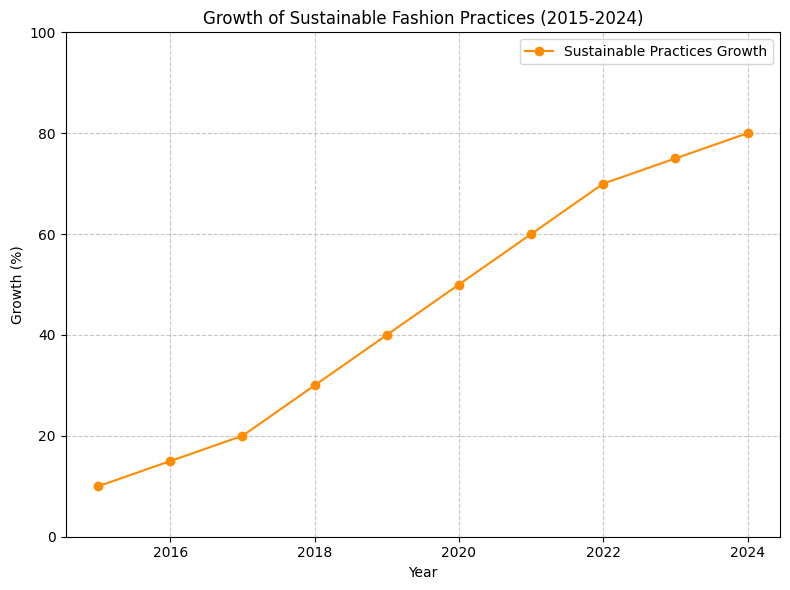
Incorporating Peak Ripeness into Design
Designers are embracing peak ripeness not only for its environmental benefits but also for its storytelling potential. Collections inspired by this concept often highlight:
- The provenance of materials.
- The artisanal techniques used in crafting garments.
- The harmony between nature and fashion.
Case Studies
- Eileen Fisher’s Circularity Program: Incorporates peak-ripe organic fibers into take-back initiatives for recycling.
- Agraloop Fibers: Converts agricultural waste into high-quality textiles.
People Also Ask
What is peak ripeness in sustainable fashion?
Peak ripeness refers to using materials at their most mature stage to maximize quality and minimize waste.
How do natural dyes benefit the environment?
Natural dyes reduce chemical usage, conserve water, and offer biodegradable alternatives to synthetic dyes.
What are some examples of peak-ripe materials?
Examples include organic cotton, hemp, banana fibers, Piñatex (pineapple leather), and Agraloop textiles.
Conclusion
Peak ripeness is more than a trend—it’s a philosophy that bridges nature’s wisdom with human creativity. By embracing this concept, the fashion industry can create garments that are not only beautiful but also sustainable and meaningful.
References
- Heuritech – Understanding Fashion Trend Life Cycles
- Advancements in Sustainable Natural Dyes – PMC
- Rethink Rebels – Sustainable Fabric Trends 2024
Disclosure
Our content is reader-supported. This means if you click on some of our links, then we may earn a commission. Commissions do not affect our editor’s opinions or evaluations. Learn more about our editorial process.

About the Editorial Staff
The PeakRipe editorial team comprises a diverse group of experts on nature’s perfect timing across various domains. Culinary innovators and nutritionists, agricultural scientists and cosmetic chemists, artisans and wellness practitioners. All collaborate to create insightful content that explores the full potential of peak ripeness in food, drink, health, beauty, flora, fashion, and art to enhance our daily lives.


